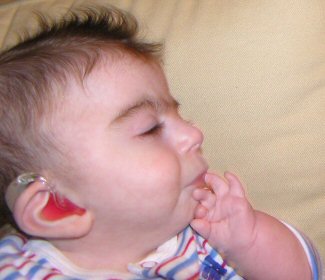What is Visual Impairment?
"A generic term that includes mild visual impairments, low vision and total blindness." (Winzer)Classification by Degree:
- Near-Normal Vision. Many people have mild impairments but they are usually corrected with prescription glasses. These individuals are able to function without special training.
- Moderate-Vision Disability. "People in this group have a moderate reduction of acuity, but no significant visual field loss."(Winzer) Lighting and special requirements are needed.
- Low Vision. "As a term, low vision was introduced after World War 2, when a distinction from totally blind was necessary to tailor specific rehabilitation services for veterans returning to the workforce. Even today, the term low vision is not easily defined; It generally describes people who are neither totally blind nor fully sighted."(Winzer)

Classification by Age of Onset:
- Children with visual impairments are often classified by age of onset of the problems. Congenital low vision usually happens at birth compared to adventitious low vision which is caused by an accident or disease some time after birth.
Prevalence:
"Only about 1 in 1000 children under the age of 18 have severe visual impairments. Impairment of vision is primarily an adult disability, probably one-tenth as prevalent in children as in adults. People with low vision far outnumber totally or functionally blind people: only 10 to 15 percent of the entire population of persons with visually impairments are totally blind." (Winzer)
Etiology:
 "Visual problems arise from any interference with the formation of images on the retina or the transmission of retinal images to the brain. Optical errors, defects of the eyes, diseases, syndromes, and associated conditions all affect vision to a greater or lesser extent."(Winzer)
"Visual problems arise from any interference with the formation of images on the retina or the transmission of retinal images to the brain. Optical errors, defects of the eyes, diseases, syndromes, and associated conditions all affect vision to a greater or lesser extent."(Winzer)Types of Visual Impairments:
- Refractive errors(eg. Myopia, cataracts, astigmatism)
- Eye pathologies(eg. Glaucoma, albinism)
- Oculomotor problems(eg. Strabismus)
- Other problems(eg.colour blindness, photophobia)
- Syndromes(eg.Usher's syndrome, Joubert syndrome)
















